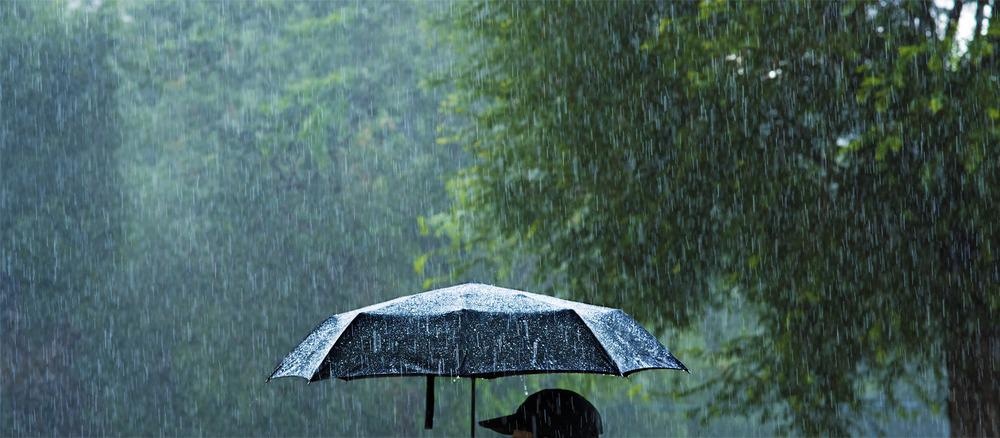Citizen science is an important activity undertaken by volunteers and is useful for recording and monitoring observations such as climate change in the Earth’s recent geological history. Thousands of volunteers in the UK, organized by The Rainfall Rescue project at Reading University in Berkshire, have transferred handwritten rainfall information into a computer record, providing an accurate summary of UK rainfall between 1836 and 2021. The aim is to expand climate scientific knowledge and inform climate change responses.

Image Credit: Niyom Napalai/Shutterstock.com
Measuring Climate Change Around the World
Climate change describes the change in average climate conditions over a period of time. It is caused by both natural and anthropogenic activity and is measured by recording, analyzing and comparing temperature, wind and rainfall data over a long period of time, from months to millions of years, all around the world.
A variety of methods and equipment is used to study and record changes in some key influencing factors. These include temperature, precipitation, biomass, sea-level change, solar activity, volcanic eruptions, and the chemical composition of air.
Historic data is retrieved by studying environments, such as ice sheets and glaciers, the fossil record, sea and lake sediments, tree rings, coral skeletons, pollen grains, and studying isotope geochemistry.
Why are Rainfall Records Important?
Rainfall records reveal historic changes in precipitation, including extreme events, and help scientists monitor and predict how rainfall is likely to change in the future.
This date helps advise policymakers and scientific bodies such as the Intergovernmental Panel on Climate Change (IPCC) and informs actions such as mitigating against flooding or drought, changes in sea level, and climate change refugee preparation.
Rainfall Rescue Project Process
The Rainfall Rescue Project was launched by Reading University in 2020 when the first coronavirus pandemic lockdown was announced by the UK Government. The idea was to utilize any spare time citizens had by asking for volunteer assistance.
The UK Met Office has thousands of handwritten manual records in its archives containing weather charts, private diaries, marine logbooks, and other meteorological data. These records needed to be transferred to a digital computer record.
The Met Office held rainfall records, dating back 200 years, which it scanned onto 65,000 sheets of paper. Rainfall Rescue Project volunteers were then asked to transfer the records onto online computer spreadsheets.
The Met Office also holds the original Beaufort Scale, developed in 1805 by Francis Beaufort, and first used on HMS Beagle, the ship that took Charles Darwin around the world. It is used for measuring wind speeds, based on observation rather than accurate measurement, and is still the most widely used wind measuring system today.
The 65,000 sheets, known as the ‘10 years rainfall sheets’, contained ten years’ worth of rainfall totals, collected from thousands of weather stations throughout the UK.
In total, the British public transferred 5.4 million rainfall observations into computer records in just 16 days. For control purposes, the data had to be keyed in four times, with a total of over 20 million keyed in observations. Place names and dates also had to be entered, so volunteers achieved around 100 million keystrokes in total.
Some of the data entered were taken from information gathered by citizen scientists before the Met Office was even established in 1854. Some of the amateur scientists were from schools, hospitals, a chocolate factory, lighthouses, and a royal residence, Sandringham House, with rainfall data recorded from 1900 to 1909, labeled ‘For his Majesty the King,’ Edward VII.
Citizen Science as an Important Technology
Citizen volunteers’ observation is invaluable for informing science in the future.
The Rainfall Rescue Project revealed key pieces of information that, until its creation, had been buried, hidden in private diaries, manuscripts, and even some hand-scribbled notes.
For example, the project discovered that 1855 was the new driest year on record, and October 1903 was the wettest month on record.
Rainfall readings now extend back to 1836, previously 1862, therefore adding 26 years of data that was previously inaccessible.
The project has mapped big UK drought periods in the 1840s, 1850s, 1880s and 1890s.
The data is helping scientists to model flood or drought scenarios, identify trends and assist in advising policymakers on action that needs to be taken to mitigate climate change and protect citizens and livelihoods.
There are many citizen science projects currently operating around the world.
The National Geographic magazine has a range of projects, from recording wildlife or birds, to helping NASA find interstellar dust impacts.
Zooniverse asks for citizens to get involved and help inform real research. Its current projects include counting giraffes in Kenya by checking 100 motion-activated web cameras. Alternatively, space enthusiasts are being asked to spot disks around stars, where planets form.
One of the most important aspects of citizen science is that it makes research economically viable for researchers or institutions working to a tight budget. Volunteers do not usually get paid, but the reward is in contributing to the advancement of research, conservation, or developing a scientific theory that may help tackle climate change.
References and Further Reading
Uk’s rainfall records rescued by volunteer army (03.25.2022) Amos.J in BBC news online (accessed 04.04.2022) https://www.bbc.co.uk/news/science-environment-60860397
Rainfall Rescue (2020) online (accessed 04/04/2022) https://www.zooniverse.org/projects/edh/rainfall-rescue
Help needed to rescue UK’s old rainfall records (03.26.2020) in BBC news online (accessed 04.04.2022) https://www.bbc.co.uk/news/science-environment-52040822
Measuring Climate Change (2022) in Global Greenhouse Warming online (accessed 04/04/2022) http://www.global-greenhouse-warming.com/measuring-climate-change.html
Citizen Science Projects (2022) Simmons.C.R, Shea,J (ed) in National Geographic online (accessed 04.06.2022) https://www.nationalgeographic.org/idea/citizen-science-projects/
Zooniverse Projects (2022) in Zooniverse.org online (accessed 04.06.2022) https://www.zooniverse.org/projects
Disclaimer: The views expressed here are those of the author expressed in their private capacity and do not necessarily represent the views of AZoM.com Limited T/A AZoNetwork the owner and operator of this website. This disclaimer forms part of the Terms and conditions of use of this website.